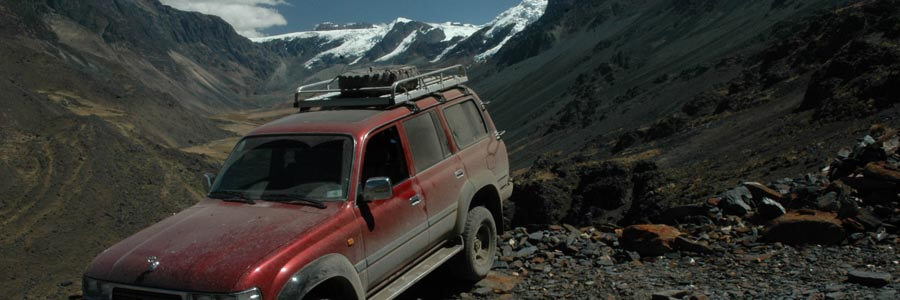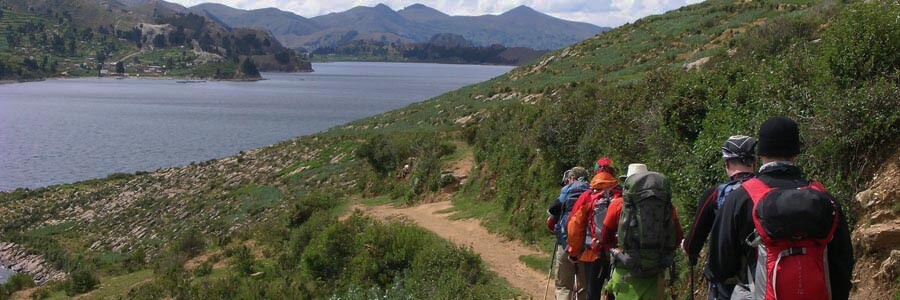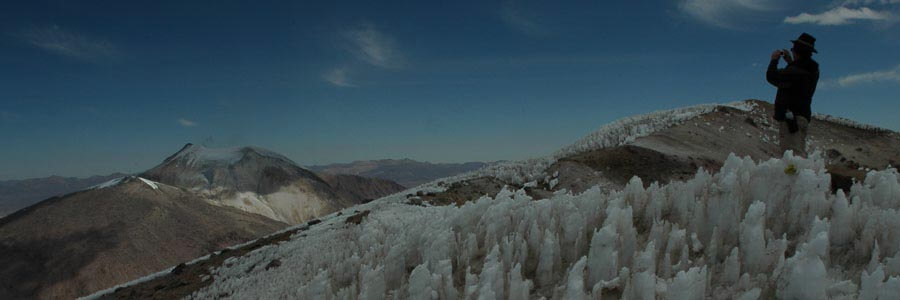When the Spaniards arrived to the central Andes of South America they met the Incas and believed that everything was Inca, this has originated a confusion that still nowadays goes on; most people - even locals - think that all the ruins, archaeological sites and ancient trails were built by the Incas but the truth is that for centuries (actually, more than two millennium) before the Incas there were other cultures that dominated different regions of the Andean high lands and the Amazonian territories.
Anthropologists believe that the first trails were made by animals and just followed by hunters chasing llamas, Vicuñas, Alpacas or Guanacos (4 descendents from the family of the Camel). Later ancient cultures actually built trails to link the different ecological steps between the Pacific coast line to the Amazon basic, including the highlands and the Andean range in between.
The most important commercial or trading trails follow a east-west line, while important highways would link these trails following a north-South line over the highlands.
Archaeologist estimated in about 30 thounsand kilometers the huge web of ancient trails existing in the Andes, most of them created during the Tiwanacu period or before.
The Incas took advantage of this road network, improved and rebuilt some sections, and reorganize it accordingly to their own administrative system.
Unfortunately, a big part of this road network - build for people or Llamas - have been destroyed during colonial times (when the Spaniards remove out the stones to allow their horses to use the trails) and in modern timer to build new roads, and acfess roads for mining and agricultural industry.
But not all are bad news, a great part of this trails survived and are almost intact and showing the original civil engineering work. Actually, it is almost impossible not to step on them when hiking in the Andes. In remote areas of the country, locals do still use these trails regularly to transport their products almost all year around and these are the trails we follow on our treks.


Cordillera Real traverse (TTROYAL)
New trekking route along the western side of Cordillera Real with splendid views of mountain landscape and the highlands; truly a life time experience!.

Northern Cordillera Real trek (TTROYALN)
Northern tag of the new trekking route along the western side of Cordillera Real with splendid views of mountain landscape and the highlands.

Central Cordillera Real trek (TTROYALC)
The most representative section of the classic “Trans-Cordillera” route from Koatia to Condoriri valley.

Cordillera Real sampler (TTCONDOR)
Mountain trek from Condoriri valley to the northern slopes of Huayna Potosi; a sampler of a trek in Cordillera Real.

Classic Choro trail (TTCHORO)
One of the best preserved pre-Hispanic stone-paved trails in the Andes; from the mountains down to the cloud forest, an impressive descent of almost 3.5km.

Yungacruz trail; from the Andes to the Amazon (TTYUNGAC)
Contouring Illimani massif and descending to the Yungas cloud forest following an ancient coca leave trading route; a memorable trip to experience the close relationship between the Andes and the Amazon.

Quimsa Cruz circuit (TTQUIMSA)
Quimsa Cruz, the smallest mountain range in the eastern Bolivian highlands, it is truly a microcosm of the Andes.

Andes to the Amazon trek (TTANDEAMAZ)
Trekking from the highlands of Lake Titicaca through the Royal mountain range and down into the cloud forest, followed by a motor boat into Madidi National Park. Our route follows ancient coca leave and gold mining trading routes; a memorable experience to fell the close relationship between the Andes and the Amazon.

The Bears’ trail (TTMADIDI)
Certainly the best mountain trek in Bolivia and probably one of the best in South America; an extraordinary landscape on wild and pristine country.

Island of the Sun trek (TTISLSOL)
Spectacular trek on the Island of the Sun following an ancient pilgrimage route. It was in this island where according to traditions gods created all living beings.








